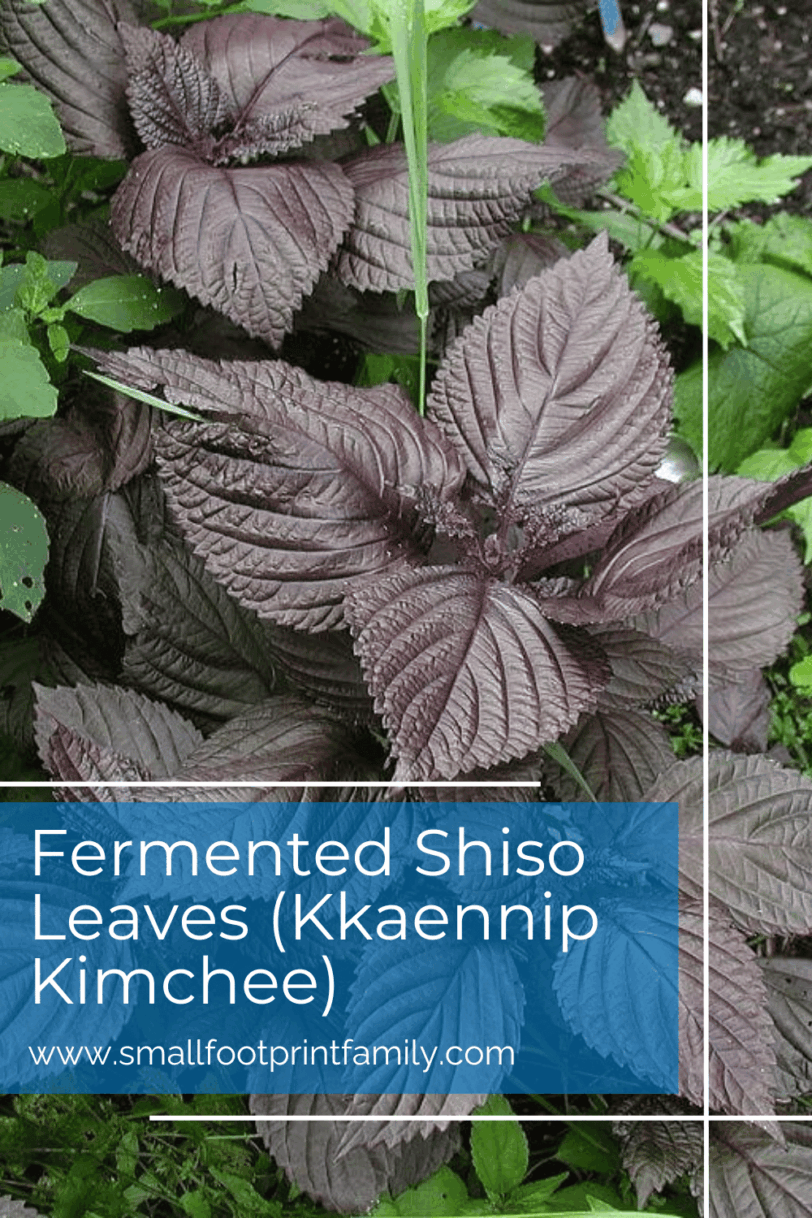Perilla frutescens, or shiso leaf, is also known as oba leaf, beefsteak plant, sesame leaf, or just “perilla.” Shiso is an easy to grow herb in the mint family that is usually planted in the spring and harvested in the summer and fall, unless you live in a climate like Southern California, where it can be grown year-round. Shiso is rather expensive in the grocery store, so it’s great that it is so easy and prolific to grow organically.
Shiso was brought to the United States in the late 1800s by Asian immigrants. It has quickly naturalized and become a common weed of gardens, pastures and roadsides in the southeastern United States.
Found growing in sunny open fields, roadsides, waste places and open woodlands, shiso is a very attractive plant for the garden, and attracts butterflies and other pollinators.
How to Use Shiso Leaves
Shiso leaves are either red or green. The red shiso is often described as having an anise flavor, whereas the green variety is said to be spicier and more like cinnamon. The leaves are rich in calcium and iron, and are used in Chinese medicine to treat asthma, colds, flu and other respiratory ailments.
The Japanese, in particular, use the red variety to color umeboshi plums and pickled ginger. Perilla seeds form an essential part of the famous seven spices of Japan, which originated more than 300 years ago in Kyoto.
Green perilla leaves are often wrapped around sushi or served with sashimi as a garnish. They also are added to soups, tempura or dried and sprinkled over rice. Japanese chefs also add red perilla to tofu or bean curd dishes or use it wrapped around pieces of meat.
Shiso has a unique flavor: pungent and grassy, it contains strong flavors of spearmint, basil, anise and cinnamon. Slicing it into long skinny strips really brings out these flavors.
Most sushi fans are probably familiar with the leaf, but chopped shiso buds are especially delicious. Shiso seeds are packed with aromatic flavor, and they’re especially good toasted and crushed on top of fish.
Related: Ahi Tuna Poke Bowl (Maguro Butsu)
Shiso leaf is best:
- julienned and sprinkled on a simple citrus or mixed green salad.
- tossed into a pot of your favorite green tea
- minced into or as a leaf wrap for tuna salad—shiso LOVES tuna.
- chopped up with fresh fruit (plums, especially).
- chopped up and added to roasted or stir-fried veggies.
- as a leaf wrap for barbecued meat or tofu.
- in scrambled eggs, especially with a generous spoonful of unsweetened yogurt.
Here’s a delicious, traditionally Korean way to use shiso and nourish your digestive system at the same time. And who couldn’t use another delicious fermentation recipe?

Kkaennip Kimchee (Korean-Style Fermented Shiso Leaves)
Ingredients
- 1 large bunch shiso leaves, enough to loosely stack 2-3 inches high
- sea salt
- 2 tsp. mam ruoc, Vietnamese or other Asian fermented shrimp paste
- 2 tsp. nuoc mam, Vietnamese or other Asian fish sauce
- 2 tsp. gochujang, Korean chili paste, or more if you like it spicy (contains soy)
- 2-3 cloves garlic, minced
- 1 1-inch knob fresh ginger, peeled and minced
- filtered water
Instructions
- Wash shiso leaves and remove stems.
- Stack the leaves putting a fine layer of sea salt in between every other leaf.
- Put the leaves into a glass or ceramic bowl with just enough pure water to cover. Leave in the brine for several hours or overnight.
- Drain leaves.
- In a separate bowl, mix the rest of the ingredients together until you get a loose paste.
- Using a butter knife or the back of a spoon, spread a little bit of the paste in between every other leaf, until all the chili paste is used up.
- Fold up the whole stack and place into a clean, sterile Mason jar or fermenting crock.
- Add pure water until the leaves are covered, then close the jar loosely, or use an airlock fermentation lid.
- Leave in a cool, dark place to ferment. This takes about a week, though in cool weather it could take longer.
- Unless you are using an air-lock fermenting lid, you should check the lid every day to see if any fermentation gas needs to escape.
- Serve a small plate of the leaves to be eaten as a banchan (side dish), mince the leaves into vegetables or salads for a spicy kick, or eat your fermented shiso by wrapping a leaf up with some lettuce and bulgogi (Korean BBQ).












